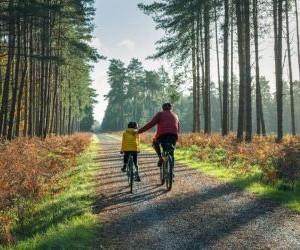Explore the best cycling and bike touring routes in Raleigh, from scenic greenways to wooded trails and smooth city rides—perfect for a vacation on two wheels.
BEST CYCLING AND BIKE TOURING ROUTES IN MAJURO
Thinking of biking your way around Majuro? Good call. This stunning atoll in the Marshall Islands is tailor-made for cycling. With its single main road, warm weather, and chill island energy, it's the perfect place to explore by bike. Whether you're aiming for casual beachside spins or full-day tours across the islets, Majuro delivers a unique two-wheeled experience. In this guide, we’ll explore the best cycling and touring routes, tips for staying safe in the tropical heat, and how to make the most of your cycling holiday in Majuro. Let’s ride island-style.

Best routes across Majuro Atoll
Smooth roads, ocean views, and local life
Cycling in Majuro is both simple and scenic. The entire atoll stretches roughly 50 kilometres from end to end, connected by a single paved road called the Laura Road (or simply “the road”). This route offers panoramic views of the Pacific Ocean on both sides, dotted with local villages, beaches, and coconut groves.
Start your ride from Uliga, the downtown area, where you’ll find the market, bike rentals, and accommodations. From there, head west through Delap and Rita toward the airport, then on to the rural stretch toward Laura. This journey is about 30 kilometres one way and makes for the ultimate full-day ride—with plenty of chances to stop for snacks, dips in the ocean, or cultural landmarks like churches and WWII relics.
Uliga to Laura – 30 km of paved road, beach stops, and roadside food stalls
Airport Loop – a short but lively section with planes overhead and scenic coast
Delap to Rita ride – cruise through the heart of Majuro’s urban core
Lagoon side exploration – side paths along the calm inner lagoon
Laura to Ajeltake – rustic, peaceful, and surrounded by palm-lined views
What makes Majuro unique is the balance between laid-back pace and visual drama. You’ll often have the road to yourself, with the ocean just meters away. It’s not about high speeds—it’s about soaking in paradise one pedal stroke at a time.
Touring advice for longer rides
What to know before riding all day
Doing a full-day tour in Majuro isn’t about clocking distance—it’s about riding smart under the island sun. While the terrain is flat and the traffic light compared to most cities, tropical conditions bring their own set of challenges. Here’s how to plan like a local.
First, leave early. The sun gets fierce after 11 a.m., and shade is scarce on the open road. Pack plenty of water—2 to 3 litres at least—and rehydration salts if you're doing a long ride. Sunscreen is a must, and so is covering up with light, UV-protective clothing. A cap under your helmet helps a lot too.
There are no big bike shops outside the Uliga area, so bring your own spare tubes, tools, and a pump. Roads are generally in good shape but expect the occasional pothole or sandy patch, especially near construction zones.
Start early to avoid peak heat
Hydrate constantly—tap water is not always drinkable, so carry bottled
Bring basic bike tools and spare gear
Use sunscreen, sunglasses, and breathable clothes
Respect local customs—modest dress is appreciated in villages
If you’re touring with bags, make sure they’re waterproof or at least water-resistant. Sudden rain showers are common. A handlebar bag with snacks, a phone, and a small first aid kit will make your ride smoother. Also, locals are very friendly—don’t hesitate to stop and ask for directions, or just chat. You might even be offered a coconut or fresh fish along the way!
One highly recommended loop is a ride from Uliga to Laura, chill for an hour at Laura Beach Park, then head back. Or if you’re up for it, stay overnight in Laura and ride back the next morning. It’s peaceful, remote, and truly feels like you’re riding at the edge of the world.
Local tips and cultural insights
Ride respectfully and experience more
Majuro’s culture is part of what makes bike touring here so special. People are warm, welcoming, and deeply connected to the land and ocean. But as a visitor, it’s important to ride with awareness—not just of the road, but of the rhythm of local life.
Cyclists are a common sight, and you’ll likely get lots of friendly waves or “Iokwe” (hello in Marshallese). Be polite when passing homes or people walking barefoot along the road. In more rural areas like Ajeltake and Laura, it's customary to greet people with a nod or smile, especially elders.
Modesty matters. Even though it’s hot, avoid cycling in just a sports bra or shirtless. Lightweight T-shirts and shorts that cover the thigh are ideal and show respect for local norms. And if you’re stopping to eat or explore a church, slip into something more covered.
Greet locals with “Iokwe” and a smile
Cover up more than you would at home—it’s appreciated
Keep noise low in village areas
Try local foods like pandanus, breadfruit, and coconut fish curry
Respect private property—don’t assume beaches are public
Another cool thing? You’ll often pass schools where kids are eager to say hi. Don’t be surprised if someone asks to try your bike. It’s always safe to be friendly but firm, and keeping valuables secured is just common sense.
Finally, ride slow, stop often, and let the island pace guide you. You’re not racing—you’re soaking up an incredibly unique destination from the best seat possible: your saddle.
YOU MAY ALSO BE INTERESTED






